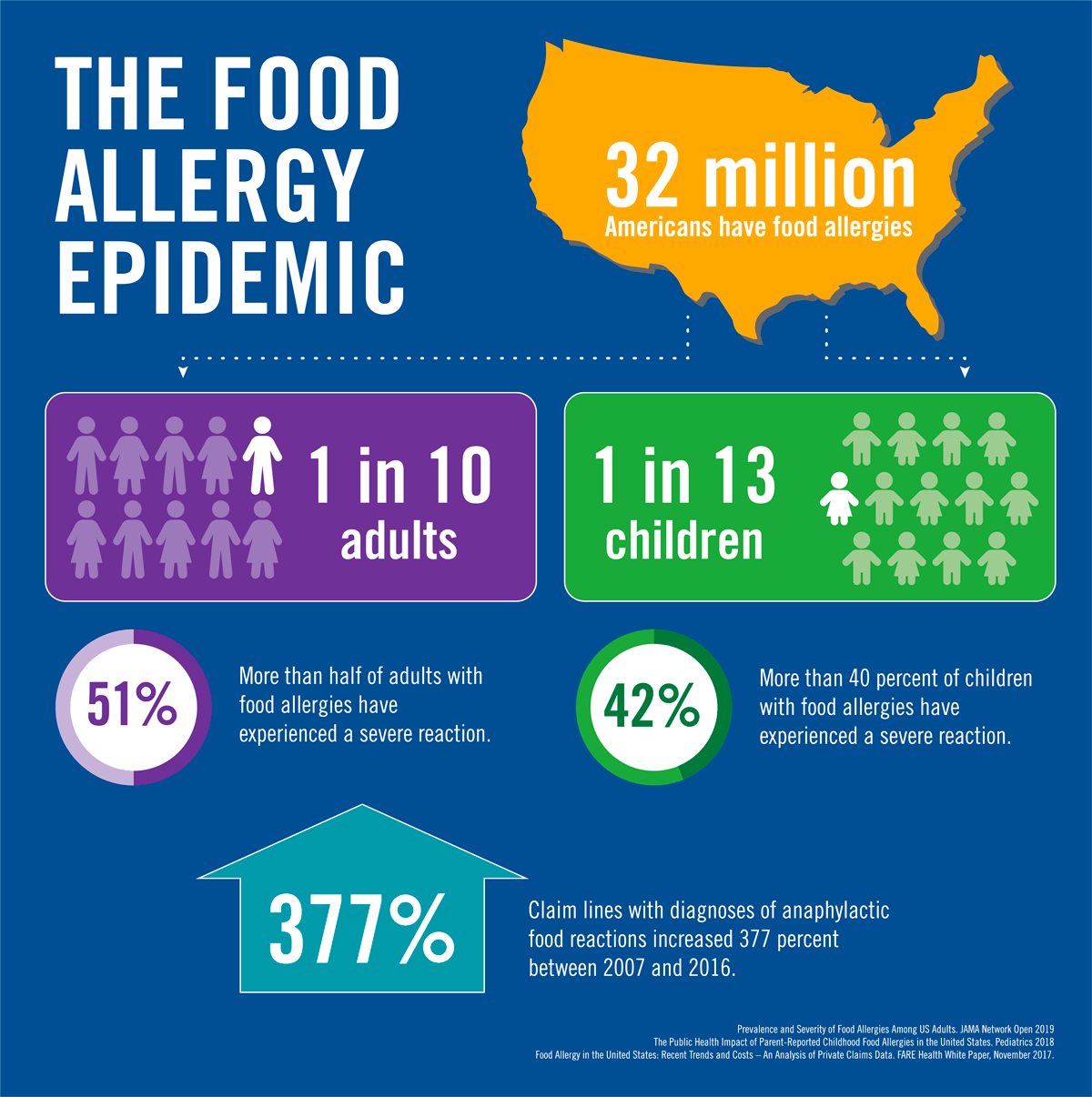Two recent studies have revealed that 32 million Americans — more than double what was previously believed — are living with a potentially life-threatening food allergy.
The first study concluded that food allergies affect about 1 in 13 children in the United States. Those numbers are in line with conclusions from earlier studies. The second study revealed that an estimated 10% of the adult population has at least one current food allergy. That is virtually three times the amount that had been previously reported. The rise in food allergies has reached epidemic proportions.
However, there has also been positive news over the past several years. Increased awareness and funding have led to developments that give hope to families living with food allergy.
- In 2017, the National Institute of Allergy and Infectious Diseases (NIAID) introduced new guidelines recommending that parents and caregivers introduce peanut-containing foods during infancy to lower the risk of peanut allergy. These guidelines, aimed at healthcare professionals as well as parents, were the result of a pair of groundbreaking studies about peanut allergy. We now know that children introduced to peanut early have a much lower chance (81%) of developing peanut allergy.
- Although at this time the FDA has not approved a treatment to prevent food allergies or lessen their severity, there has been much progress. Thanks to research and clinical trials, like the ones conducted by Atlanta Allergy & Asthma’s Research Department, we are closer to our goal of identifying safe and effective therapies for those at risk for severe reactions to peanut.
- Allergen Immunotherapy, sometimes referred to as desensitization, is a therapy that trains the patients’ immune system to be less reactive. Three types of immunotherapy to treat food allergy have made significant progress in clinical trials: oral immunotherapy, in which allergen is eaten; sublingual immunotherapy, in which allergen is placed under the tongue; and epicutaneous immunotherapy, in which allergen in a dermal patch is applied to the skin. See a detailed report on the current state of food allergy treatment.

